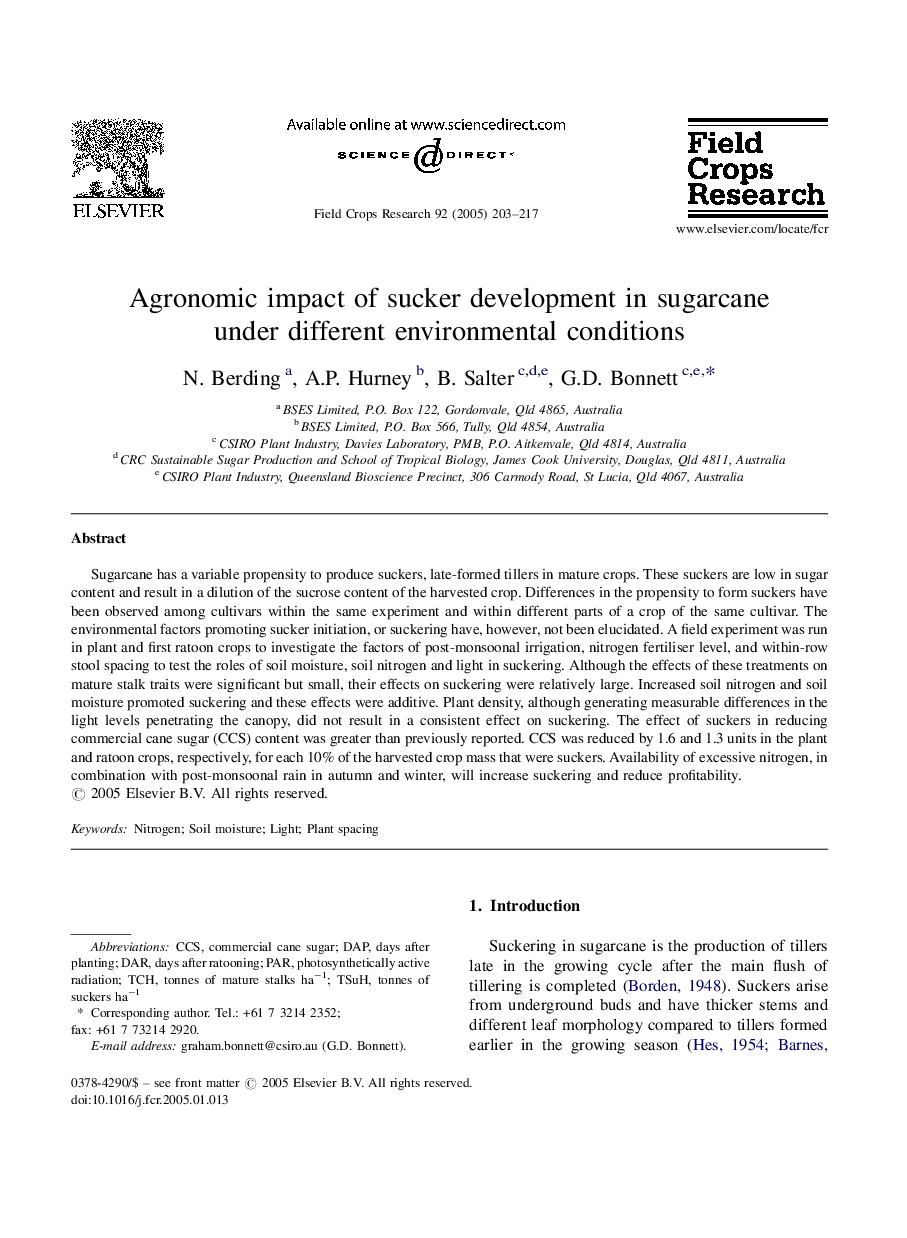| Article ID | Journal | Published Year | Pages | File Type |
|---|---|---|---|---|
| 9473552 | Field Crops Research | 2005 | 15 Pages |
Abstract
Sugarcane has a variable propensity to produce suckers, late-formed tillers in mature crops. These suckers are low in sugar content and result in a dilution of the sucrose content of the harvested crop. Differences in the propensity to form suckers have been observed among cultivars within the same experiment and within different parts of a crop of the same cultivar. The environmental factors promoting sucker initiation, or suckering have, however, not been elucidated. A field experiment was run in plant and first ratoon crops to investigate the factors of post-monsoonal irrigation, nitrogen fertiliser level, and within-row stool spacing to test the roles of soil moisture, soil nitrogen and light in suckering. Although the effects of these treatments on mature stalk traits were significant but small, their effects on suckering were relatively large. Increased soil nitrogen and soil moisture promoted suckering and these effects were additive. Plant density, although generating measurable differences in the light levels penetrating the canopy, did not result in a consistent effect on suckering. The effect of suckers in reducing commercial cane sugar (CCS) content was greater than previously reported. CCS was reduced by 1.6 and 1.3Â units in the plant and ratoon crops, respectively, for each 10% of the harvested crop mass that were suckers. Availability of excessive nitrogen, in combination with post-monsoonal rain in autumn and winter, will increase suckering and reduce profitability.
Keywords
Related Topics
Life Sciences
Agricultural and Biological Sciences
Agronomy and Crop Science
Authors
N. Berding, A.P. Hurney, B. Salter, G.D. Bonnett,
